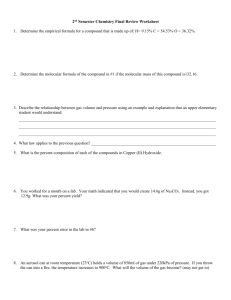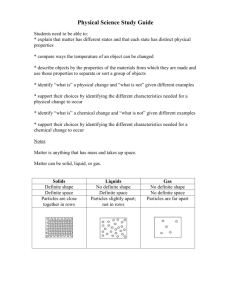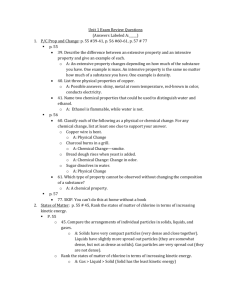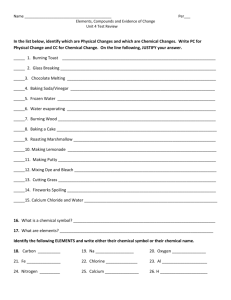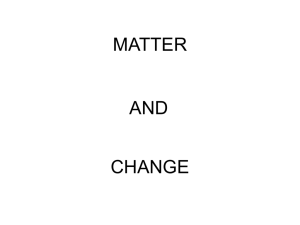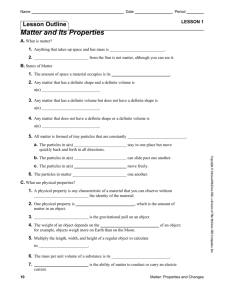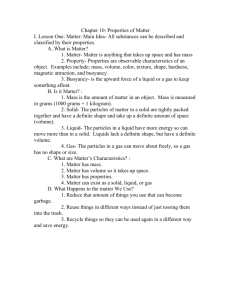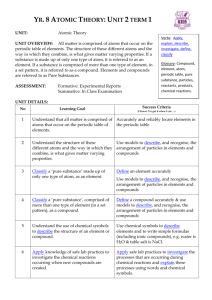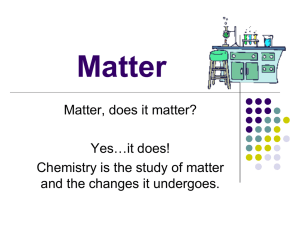Chapter 2: Study Guide
advertisement
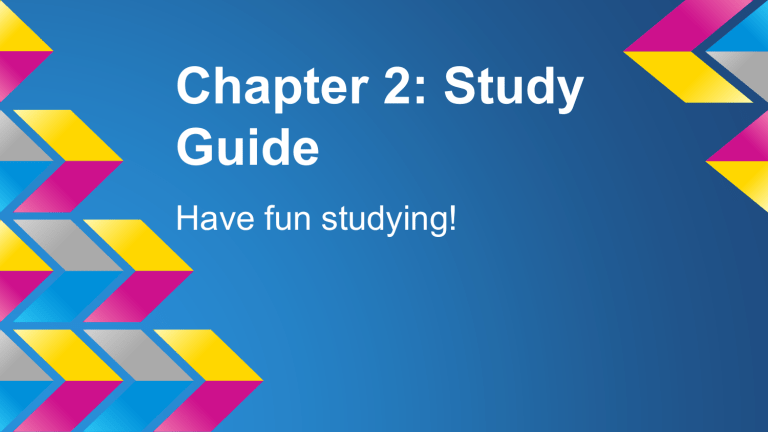
Chapter 2: Study Guide Have fun studying! Atoms rearrange to form matter with different properties. Give an example of how elements can be separated during a chemical reaction. Some examples (You’ll need to be able to explain ONE.) ● Separating iron from iron ore: When iron ore is heated with carbon, the product is pure iron and carbon dioxide. ● Separating a fossil from limestone: Limestone can be broken down by adding vinegar and the fossil will be left unchanged. ● Separating lead from a solution: Lead can be removed from a solution that contains water and a compound of iodine. When mixed, lead iodide is formed and can be filtered from the liquid to remove the lead from the solution. Evidence of a chemical change might include the formation of... ● gas ● new solid (like when two solutions mix and form a precipitate) What does the word “product” mean in a chemical reation? A product is something made during a chemical reaction Give two examples of products made during a chemical reaction. Here are some examples you might choose, but there are more: ● Rust is formed when oxygen and iron react together. ● Hydrogen and oxygen react to form hydrogen peroxide. ● Magnesium and oxygen combine to form magnesium oxide. What happens to matter that has gone through only a physical change? In a physical change, matter can change state, shape, size, etc...but it keeps the same chemical properties. What are some examples of physical changes? These are some examples, but there are more: ● Copper can be hammered into sheets. ● Paper can be torn into small pieces. ● Potatoes can be cut or shredded. ● Hair can be cut. Do the particles in a solid, liquid, or gas have the most energy? Which has the least? ● Particles in a gas have the most amount of energy. Particles in a solid have the least amount of energy. ● The order from least amount of energy to most amount of energy would be: solid → liquid → gas Explain what a chemical change is. A chemical change occurs when one type of matter changes into a different type of matter with different properties. Give an example of matter that has gone through a chemical change. There are many examples, but here are a few: ● When wood is burned, the burning wood combines with oxygen and changes into ash and gas. ● Cooking a potato changes the chemical properties, therefore, this is evidence of a chemical change. ● A burning candle wick would be another example. Melting was is a physical change because it is only changing the state of matter, but burning a candle would be an example of a chemical change. List the properties of solids, liquids, and gases. ● solids- particles have a definite shape and volume; particles vibrate in place ● liquids- no definite shape (takes shape of the container), but has a definite volume. Particles move more rapidly. ● gases- no definite shape or volume. Particles are far apart, rapic movement, spread out evenly in container. Which of the following can only be separated by a chemical process: mixture, solution, matter, or compound? compound What do scientists use to identify acids and bases? indicator paper What can be said for the mass of reactants versus the mass of products in a chemical reaction? (Law of Conservation of Mass) The mass of the reactants is equal to the mass of the product. At what temperature does a liquid turn into a solid? Freezing Point What is condensation? Give one example. Condensation occurs when gas turns into a liquid. Some examples include: ● Dew forms on grass during the night. ● Clouds form in the atmoshpere. ● Water droplets form on the outside of a glass of ice cold water. Explain what a combination reaction is and give an example. A combination reaction happens with elements or compounds come together to form new compounds. Ex: Mg + O → MgO Explain what a decomposition reaction is and give an example. A decomposition reaction is when compounds split apart to form smaller compounds. Ex: 2H2O → H2 + H2 + O2 Explain what a replacement reaction is and give an example. A replacement reaction is when compounds split apart and rearrange to join other elements in the compound. Ex: NaOH + HCl → NaCl + H2O What is the difference between a reactant and a product? ● A reactant is a substance used in a chemical reaction.It is always found on the left side of the equation. ● A product is what is made during a chemical reaction and is always on the right side of the equation.
